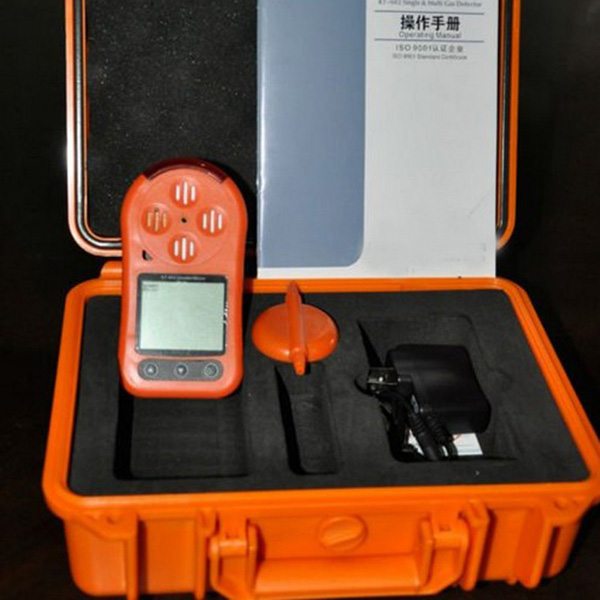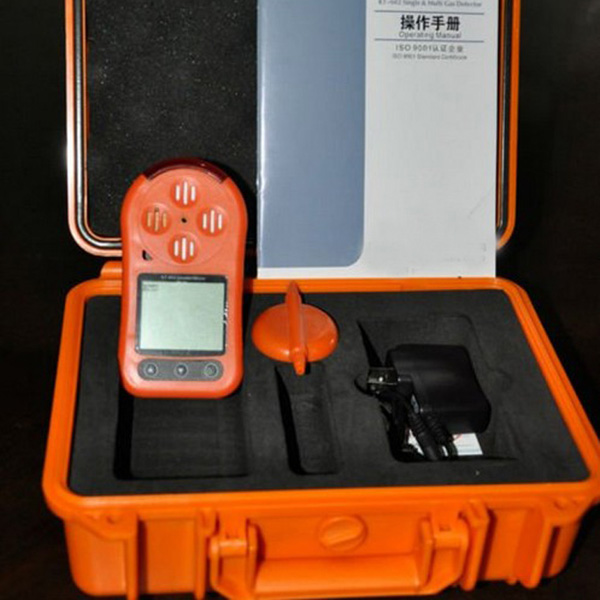

market@chinacoalintl.com
For all kinds of different production occasions and testing requirements, how to choose a suitable gas detector is a matter that every person engaged in safety and sanitation must pay great attention to. Here, Shandong China Coal Group combines experience and will introduce some specific situations for your reference.
01
Confirm the type of gas to be detected and the detection range (range)
The type of gas produced in each factory environment is different, and all possible situations must be considered when selecting a gas detector. If methane and other less toxic alkanes are predominant, it is undoubtedly more appropriate to choose a combustible Ex detector. This is not only because the combustible Ex detector is simple in principle and widely used, but it also has the characteristics of easy maintenance and calibration. If there are toxic gases such as carbon monoxide and hydrogen sulfide, a specific gas detector must be selected first to ensure worker safety. If it is more volatile organic gas, considering its low concentration that may cause personnel poisoning, such as hydrocarbons, halogenated hydrocarbons, oxyhydrocarbons and nitrogen hydrocarbons, you should choose PID photoionization detector, and absolutely not Use ordinary detectors to cope with this, because this may lead to failure to achieve protective safety conditions due to gas detection errors.
If the gas type covers the above several types of gas, selecting a multi-parameter gas detector / detector may achieve a multiplier effect. Such as Shandong China Coal Group's multi-parameter gas detector or multi-parameter gas detector

Notes On Choosing The Right Gas Detector
02
Confirm the operating environment of the selected gas detector
The choice of gas detectors is different in different industrial environments.
(A) Fixed gas detector:
This is a tester that is often used in industrial installations and production processes. It can be installed at specific detection points to detect specific gas leaks. In the process and technology, it is more suitable for the continuous and long-term stability required by the fixed inspection. The gas detector should also be selected according to the type and concentration of the gas on the site, and also pay attention to installing them at the location where the specific gas is most likely to leak, for example, the most reasonable use of the gas detector installation and the ground height should be selected according to the specific gravity of the gas Distance etc. Such as GD-QT-LC series online gas detector.
(B) Portable gas detector:
Because the portable instrument is easy to operate and compact, it can be carried to different production parts. The electrochemical detector is battery-powered and can be used continuously for hundreds of hours; the new combustible Ex detector, PID and multi-parameter instruments use rechargeable batteries ( There are non-memory nickel-metal hydride or lithium-ion batteries, so that they can generally work continuously for nearly 12 hours, so, as such instruments are more and more widely used in various factories and health departments. Such as SC-QT-LC series.
If entering a confined space, such as reaction tanks, storage tanks or containers, sewers or other underground pipelines, underground facilities, agricultural closed grain silos, railway tank cars, shipping cargo tanks, tunnels and other workplaces, they must be tested before entering. , But also to be tested outside the confined space. At this time, you must choose a multi-gas detector with a built-in sampling pump.
Because the gas distribution and gas types in different parts of the confined space (upper, middle and lower) are very different. For example: in general, combustible gases are lighter in weight, most of them are distributed in the upper part of the enclosed space; carbon monoxide and air have the same specific gravity, generally distributed in the middle of the enclosed space; and heavier gases such as hydrogen sulfide exist in the enclosed space The lower part of the space. At the same time, oxygen concentration is also one of the types that must be detected. In addition, if you consider the possible volatilization and leakage of organic substances in the tank, a detector that can detect organic gases is also needed.
Therefore, a complete gas detector in a confined space should have a built-in pumping function-so that it can be detected in non-contact and divided parts; it has a multi-gas detection function-to detect dangerous gases distributed in different spaces, including inorganic Gas and organic gas; with oxygen detection function-to prevent hypoxia or oxygen enrichment; small size, portable instrument that does not affect the work of workers. Only in this way can the absolute safety of the staff entering the confined space be guaranteed.
In addition, after entering the confined space, the gas composition in it must be continuously tested to avoid changes in the concentration of volatile organic compounds or other toxic and harmful gases due to personnel entry, sudden leakage, and temperature changes. If it is used for emergency accidents, leak detection and inspection, pump-type instruments with short response time and high sensitivity and resolution should be used, so that the location of the leak point can be easily determined.
In the case of industrial hygiene inspections and health surveys, it is very convenient to use instruments with data recording and statistical calculations and functions that can be connected to computers.
At present, with the development of manufacturing technology, portable multi-gas (composite) detector is also a new choice for us. Since this detector can be equipped with multiple gas (inorganic / organic) detection instruments on one host, it has the characteristics of small volume, light weight, corresponding fast, and simultaneous multi-gas concentration display.
03
Matters needing attention when using gas detector
1) Pay attention to regular calibration and testing.
2) Pay attention to the detection interference between different sensors.
3) Pay attention to the life of various sensors:
4) Pay attention to the concentration measurement range of the detection instrument:
In short, the toxic and harmful gas detector / detector is a powerful tool to ensure industrial safety and staff health. We need to select the appropriate gas detector according to the specific use environment and required functions. At present, the detectors / detectors available for our selection include fixed / portable, diffusion / pumped, single gas / multi-gas, inorganic gas / organic gas and many other combinations. Only by choosing the right gas detection equipment can we really achieve more with less effort and prevent future problems. For friends who have more professional questions about gas detectors / detectors, please feel free to leave us an online message!

© Shandong China Coal Group. © 2017
Address: No. 11, North of Kaiyuan Road, High-tech Zone, Jining City, Shandong Province, China
sales@chinacoalintl.com
Executive Editor: Zhang Wen / Editor: Linda Zhang